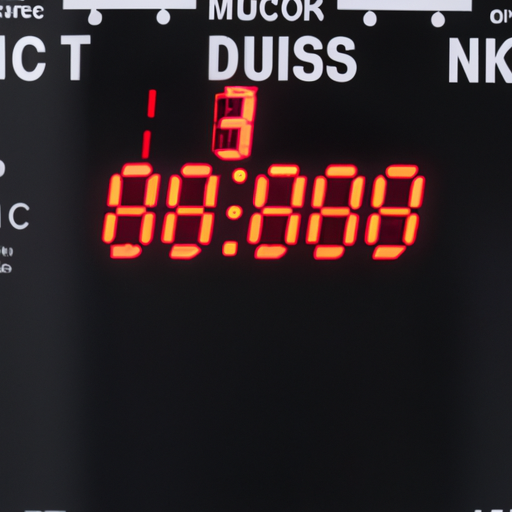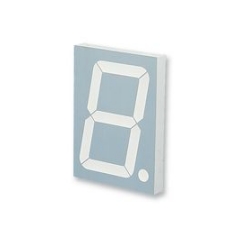An article to help you understand what a capacitor factory is
An Article to Help You Understand What a Capacitor Factory Is
I. Introduction
In the world of electronics, capacitors play a crucial role in the functionality and efficiency of devices we use every day. From smartphones to computers, capacitors are integral components that store and release electrical energy. This article aims to provide a comprehensive understanding of what a capacitor is, the significance of capacitor factories, and the processes involved in manufacturing these essential components.
II. What is a Capacitor?
A. Basic Definition and Function
A capacitor is a passive electronic component that stores electrical energy in an electric field. It consists of two conductive plates separated by an insulating material known as a dielectric. When voltage is applied across the plates, an electric field is created, allowing the capacitor to store energy. This stored energy can be released when needed, making capacitors vital for various applications, including filtering, timing, and energy storage.
B. Types of Capacitors
Capacitors come in various types, each designed for specific applications:
1. **Ceramic Capacitors**: These are made from ceramic materials and are widely used due to their small size and reliability. They are often found in high-frequency applications.
2. **Electrolytic Capacitors**: Known for their high capacitance values, electrolytic capacitors are polarized and typically used in power supply circuits.
3. **Film Capacitors**: These capacitors use a thin plastic film as the dielectric. They are known for their stability and low loss, making them suitable for audio and high-frequency applications.
4. **Tantalum Capacitors**: Made from tantalum metal, these capacitors offer high capacitance in a small package and are often used in compact electronic devices.
C. Key Specifications and Characteristics
Understanding the specifications of capacitors is essential for selecting the right component for a specific application:
1. **Capacitance**: Measured in farads (F), capacitance indicates the amount of electrical charge a capacitor can store.
2. **Voltage Rating**: This specification indicates the maximum voltage a capacitor can handle without breaking down.
3. **Equivalent Series Resistance (ESR)**: ESR is a measure of the resistance a capacitor presents to alternating current (AC). Lower ESR values are desirable for high-frequency applications.
III. The Role of Capacitor Factories
A. Overview of Manufacturing Processes
Capacitor factories are specialized facilities dedicated to the production of capacitors. The manufacturing process involves several stages, from sourcing raw materials to assembling and testing the final product. These factories play a vital role in ensuring a steady supply of capacitors to meet the demands of the electronics industry.
B. Importance of Quality Control in Capacitor Production
Quality control is paramount in capacitor manufacturing. Capacitors must meet strict performance standards to ensure reliability and safety in electronic devices. Factories implement rigorous testing procedures to identify defects and ensure that each capacitor meets its specified characteristics.
C. The Relationship Between Capacitor Factories and the Electronics Industry
Capacitor factories are essential partners in the electronics supply chain. They provide the necessary components that enable manufacturers to produce a wide range of electronic devices. The growth of the electronics industry directly influences the demand for capacitors, making these factories critical to technological advancement.
IV. Manufacturing Process of Capacitors
A. Raw Materials Used in Capacitor Production
The production of capacitors begins with the selection of raw materials:
1. **Dielectric Materials**: The choice of dielectric material significantly impacts a capacitor's performance. Common materials include ceramic, polyester, and tantalum oxide.
2. **Conductive Materials**: Conductive materials, such as aluminum and tantalum, are used for the capacitor plates.
B. Step-by-Step Manufacturing Process
The manufacturing process of capacitors involves several key steps:
1. **Material Preparation**: Raw materials are prepared and processed to meet specific requirements. This may involve cutting, shaping, and treating the materials.
2. **Layering and Assembly**: In this stage, the dielectric material is layered between the conductive plates. The assembly process varies depending on the type of capacitor being produced.
3. **Encapsulation and Packaging**: Once assembled, capacitors are encapsulated to protect them from environmental factors. Packaging is also crucial for safe transportation and storage.
4. **Testing and Quality Assurance**: After production, capacitors undergo rigorous testing to ensure they meet performance standards. This includes checking capacitance, voltage rating, and ESR.
C. Automation and Technology in Capacitor Manufacturing
Modern capacitor factories leverage automation and advanced technology to enhance efficiency and precision. Automated machinery can perform repetitive tasks with high accuracy, reducing the risk of human error. Additionally, advancements in manufacturing technology allow for the production of smaller, more efficient capacitors.
V. Challenges Faced by Capacitor Factories
A. Supply Chain Issues
Capacitor factories often face challenges related to the supply chain. Fluctuations in the availability of raw materials can impact production schedules and costs. Global events, such as natural disasters or geopolitical tensions, can further exacerbate these issues.
B. Environmental Regulations and Sustainability
As environmental concerns grow, capacitor factories must navigate increasingly stringent regulations. Manufacturers are under pressure to adopt sustainable practices, such as reducing waste and minimizing energy consumption during production.
C. Competition and Market Demand
The capacitor market is highly competitive, with numerous manufacturers vying for market share. Factories must continuously innovate and improve their products to meet the evolving demands of the electronics industry.
VI. Innovations in Capacitor Technology
A. Advances in Materials and Design
Recent advancements in materials science have led to the development of new capacitor technologies. For example, researchers are exploring the use of graphene and other nanomaterials to create capacitors with higher energy densities and improved performance.
B. Emerging Trends in Capacitor Manufacturing
The capacitor manufacturing industry is witnessing trends such as miniaturization and increased integration with other electronic components. These trends are driven by the demand for smaller, more efficient devices.
C. The Future of Capacitors in Electronics
As technology continues to evolve, the role of capacitors in electronics will expand. Future applications may include energy storage systems for renewable energy sources and advanced power management solutions for electric vehicles.
VII. Conclusion
In conclusion, capacitor factories are vital to the electronics industry, providing essential components that enable the functionality of countless devices. Understanding the manufacturing processes, challenges, and innovations in capacitor technology is crucial for appreciating their impact on modern technology and everyday life. As we look to the future, the continued evolution of capacitors will play a significant role in shaping the next generation of electronic devices.
VIII. References
For those interested in further exploring the topic of capacitors and their manufacturing processes, the following resources are recommended:
1. "Capacitors: Principles and Applications" by John Smith
2. Industry reports from the International Electrotechnical Commission (IEC)
3. Research papers on advancements in capacitor technology from journals such as the IEEE Transactions on Electron Devices
By understanding the intricacies of capacitor factories and their products, we can better appreciate the technology that powers our world.







